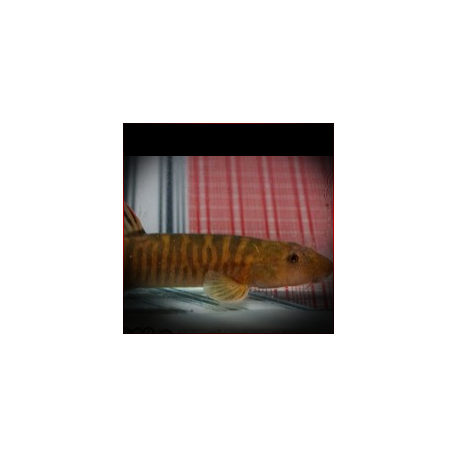More info
Datasheet
| Minimum Tank Size | 72 litres / 19.02 US gallons |
| Temperature | 20°C / 68.00°F - 24°C / 75.20°F |
| Hardness | 1.01dgH / 18ppm - 10.03dgH / 179ppm |
| pH | 6.0-7.5 |
General Description
Schistura Yingjiangensis, a member of the Nemacheilidae family within the Cypriniformes order, is a loach species found in the Daying River in Yingjiang County, Yunnan Province, China. The species is primarily omnivorous, with a diet consisting of small insects, worms, crustaceans, and zooplankton, supplemented with small amounts of plant matter that are mostly consumed through the stomach contents of prey items. The fish displays a variety of morphological characteristics that set it apart from other nemacheilids, including a distinct color pattern with dark, regular bars and black markings on the caudal fin and dorsal fin base.
Aquarium Setup
To maintain Schistura Yingjiangensis successfully, it is recommended to replicate its natural habitat within a tank setting. This involves creating an environment reminiscent of a flowing stream or river, with a substrate of rocks, sand, fine gravel, and water-worn boulders. The tank should also contain driftwood branches arranged to provide hiding spots and shaded areas, allowing for a broken line of sight. While most aquatic plants may struggle in such conditions, hardy types like Microsorum, Bolbitis, or Anubias species can be cultivated attached to the decor. Water quality is crucial, necessitating the use of power filters, powerheads, or airstones to maintain high dissolved oxygen levels and gentle water movement. Regular water changes of 30-50% of the tank volume per week are essential for the well-being of the species.
Behaviour
Schistura Yingjiangensis, like other peaceful, open water-dwelling cyprinids, tends to be a non-aggressive species suitable for community aquariums. While they can coexist with certain balitorids, such as Gastromyzon and Sewellia species, caution should be exercised with more territorial or aggressive tank mates. The species thrives in environments with ample dissolved oxygen, making them well-suited to flowing streams and areas near waterfalls where oxygen levels are naturally high. Some individuals may exhibit cave-dwelling tendencies, displaying reduced pigmentation and blindness in the absence of light in their habitat.
Feeding and Diet
In an aquarium setting, Schistura Yingjiangensis readily accepts dried foods of appropriate sizes but should not be solely fed these items. To maintain optimal coloration and health, a diet consisting of small live and frozen foods such as Daphnia, Artemia, and bloodworms is recommended. By providing a varied diet that mimics their natural food sources, aquarists can ensure the vibrancy and well-being of these loaches.
Reproduction & Dimorphism
Information on the reproductive behavior of Schistura Yingjiangensis remains unrecorded. However, adult females are likely slightly larger and heavier-bodied compared to males, suggesting potential sexual dimorphism within the species. While some congeners exhibit specific sexual characteristics such as suborbital flaps and modified pectoral fins in males, data regarding these traits in Schistura Yingjiangensis are currently unavailable.
Habitat and Distribution
The natural distribution of Schistura Yingjiangensis is limited to the Daying River, a tributary of the Irrawaddy watershed in Yingjiang County, located in the Yunnan Province of China. This species, like many nemacheilid loaches, is adapted to thriving in flowing streams with high oxygen levels and clean water. The Nemacheilidae family, to which Schistura Yingjiangensis belongs, is widely distributed across Eurasia, with notable centers of species diversity in the Indian subcontinent, Southeast Asia, and China.
Etymology
The genus name "Schistura" is derived from the Greek words "schizein," meaning 'to divide,' and "oura," meaning 'tail,' referencing the caudal fin shape common in many species of the genus. The species epithet "yingjiangensis" specifically denotes its origin in Yingjiang County, China.

